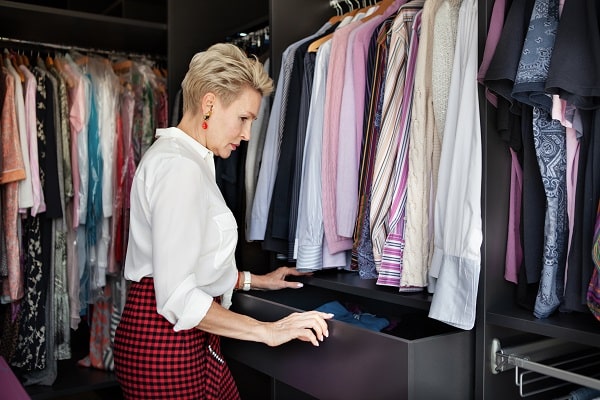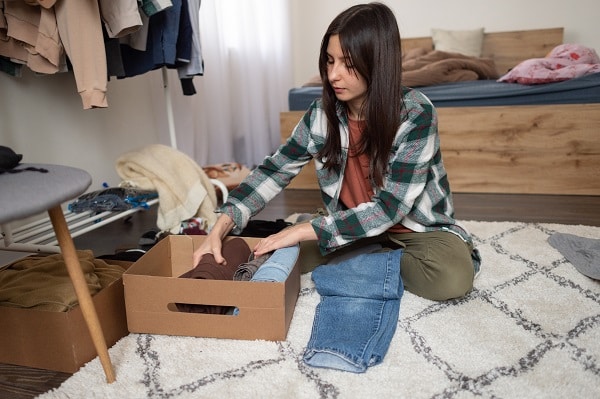Are you a borderline hoarder? The line between collecting and hoarding can be thin and often blurred. Hoarding is not merely a habit but a complex psychological issue that affects many. Borderline hoarding, a less severe form, may be lurking in your life without you even realizing it. This post aims to shed light on the signs, symptoms, and underlying causes of borderline hoarding. By understanding these aspects, you may recognize if you or someone you know is on the brink of hoarding.
Contents
- 1 What You Need To Know About Hoarding
- 2 The Psychology Behind Hoarding
- 3 Identifying Signs Of Borderline Hoarding
- 4 The Impact On Personal Life
- 5 The Impact On Professional Life
- 6 How To Approach A Borderline Hoarder
- 7 Self-Help Strategies
- 8 Professional Help And Treatment
- 9 Prevention And Education
- 10 Addressing Borderline Hoarding Is Vital!
What You Need To Know About Hoarding

Hoarding is a disorder characterized by the persistent difficulty in parting with possessions, regardless of their actual value. Many people confuse hoarding with collecting, but the two are distinct. While collectors find joy in their items and organize them, hoarders often live in cluttered spaces where items have no real purpose or value. Borderline hoarding falls somewhere in between, where the attachment to items is strong but not yet debilitating.
Common misconceptions about hoarding include the belief that it’s merely a sign of laziness or a lack of organization. In reality, hoarding is a complex mental health issue that requires understanding and compassion. Borderline hoarding, though less severe, can still have significant impacts on a person’s life. Recognizing the difference between hoarding, borderline hoarding, and simple disorganization is the first step in addressing the issue.
The Psychology Behind Hoarding

The psychology behind hoarding is multifaceted and often linked to anxiety and depression. Individuals may hoard items as a way to cope with emotional pain or to fill a void in their lives. The attachment to possessions becomes more than a preference; it becomes a necessity. Borderline hoarders may not even realize that their attachment to items is becoming problematic.
And although collecting items can be a joyful hobby for many, but when it crosses into hoarding, it becomes a burden. The thin line between collecting and hoarding is where borderline hoarders find themselves. Understanding the psychological triggers and underlying emotional needs can help in recognizing and addressing borderline hoarding. Whether it’s a fear of loss, a need for control, or a way to preserve memories, the reasons behind hoarding are deeply personal and complex.
Identifying Signs Of Borderline Hoarding

Identifying the signs of borderline hoarding is crucial for intervention and support. Common signs include an excessive accumulation of items, difficulty in discarding possessions, and a strong emotional attachment to things that others may see as worthless. Clutter may begin to interfere with daily life, yet the individual may resist attempts to declutter or organize.
The impact of borderline hoarding on relationships and personal well-being can be substantial. Friends and family may become frustrated or concerned, while the individual may feel overwhelmed and trapped by their possessions. Recognizing these signs is the first step towards understanding the problem and seeking help if needed. It’s not merely about the number of items but the emotional relationship with them that defines borderline hoarding.
The Impact On Personal Life

Borderline hoarding can have profound effects on personal life, impacting living conditions, relationships, and even health. The accumulation of items can lead to cluttered living spaces, making daily tasks more challenging and creating safety hazards. Friends and family may become increasingly concerned, leading to strained relationships. The emotional toll of living in a cluttered environment can also lead to feelings of stress and anxiety.
The struggle with borderline hoarding is not just about the physical space but also the emotional well-being of the individual. Feelings of shame or embarrassment may prevent them from inviting others into their home, leading to social isolation. The inability to let go of possessions can become a barrier to personal growth and happiness, making it essential to recognize and address the issue.
The Impact On Professional Life

Borderline hoarding doesn’t only affect personal life; it can also spill over into professional life. A cluttered home may lead to disorganization and tardiness, affecting work performance and productivity. Colleagues and superiors may perceive the individual as unprofessional or unreliable, leading to potential career implications. The stress and anxiety associated with borderline hoarding can also affect focus and creativity at work.
The professional consequences of borderline hoarding may not be immediately apparent but can gradually build over time. A lack of organization at home can translate into missed deadlines and poor time management at work. Addressing borderline hoarding is not just about improving personal life but also about enhancing professional success and fulfillment.
How To Approach A Borderline Hoarder

Approaching someone who may be a borderline hoarder requires sensitivity, empathy, and understanding. Accusations or judgments can lead to defensiveness and resistance. It’s essential to communicate concerns without attacking the person’s character or habits. Offering support and expressing a desire to help can open the door to a constructive conversation.
If the situation doesn’t improve, seeking professional help may be necessary. It’s essential to recognize that borderline hoarding is a complex issue that may require professional intervention. Encouraging the individual to seek therapy or join a support group can be a positive step toward recovery. The goal is to support without enabling, providing the tools and encouragement needed to make positive changes.
Self-Help Strategies

For those who recognize signs of borderline hoarding in themselves, self-help strategies can be a valuable first step toward improvement. Setting small, achievable goals for decluttering and organizing can create a sense of accomplishment and motivation. Recognizing the emotional triggers that lead to hoarding and finding healthier coping methods can also be beneficial.
Seeking support from friends or joining support groups can provide encouragement and accountability. Creating a plan and sticking to it, celebrating successes, and learning from setbacks can lead to lasting change. Self-help strategies are not a substitute for professional help if needed, but they can be a positive starting point for those looking to take control of their borderline hoarding tendencies.
Professional Help And Treatment

Borderline hoarding may reach a point where professional help and treatment become necessary. Therapists specializing in hoarding disorders can provide personalized strategies and support to help individuals overcome their challenges. Cognitive-behavioral therapy (CBT) is a common approach that focuses on understanding the underlying thoughts and behaviors that lead to hoarding. Group therapy and support from loved ones can also be integral parts of the treatment process.
Success stories and encouragement from others who have overcome borderline hoarding can be incredibly motivating. It’s essential to recognize that seeking professional help is not a sign of weakness but a step towards a healthier and more fulfilling life. Treatment is not a quick fix but a journey towards understanding oneself and developing healthier relationships with possessions.
Prevention And Education

Prevention and education are key to addressing borderline hoarding before it becomes a more serious problem. Educating oneself and others about the signs, underlying causes, and potential impacts of hoarding can foster understanding and compassion. Recognizing early signs and taking proactive steps can prevent borderline hoarding from escalating. Creating healthy habits and routines, such as regular decluttering and mindful purchasing, can keep borderline hoarding at bay.
Community outreach and public awareness campaigns can also play a vital role in prevention and education. Schools, workplaces, and community centers can offer resources and support for those struggling with hoarding tendencies. By creating a culture of understanding and support, society can help individuals recognize and address borderline hoarding early on, promoting overall well-being and mental health.
Addressing Borderline Hoarding Is Vital!
Borderline hoarding is a complex and often misunderstood issue that affects many aspects of an individual’s life. From personal relationships to professional success, the impacts can be far-reaching. This post has explored the signs, underlying psychology, impacts, and strategies for addressing borderline hoarding. Whether you recognize these tendencies in yourself or someone you know, understanding and compassion are key. Seek help if needed, embrace self-help strategies, and foster a healthier relationship with possessions. The journey towards a clutter-free life is not just about letting go of things but embracing a more fulfilling and balanced life!



